An introduction to Beppu Onsen hot springs
Welcome to the Beppu Eight
Where is the world’s largest onsen? By volume, Yellowstone National Park in the United States is the biggest source of natural hot spring water in the world. However, emerging at 92°C (198°F) from the ground, you wouldn’t want to take a bath here. The same should not be said of the world’s second biggest source, and by far Japan’s most expansive Onsen hot spring town, Beppu on Kyushu Island.
Inviting a varied assortment of guests from the casual travellers looking for a relaxing and recuperative stay at an Onsen Ryokan (Japanese traditional inn), through to connoisseurs wishing to sample the full range of mineral baths here (there are 11 known kinds of hot spring in the world and ten of them rise in Beppu).
Situated on the eastern coast of Kyushu Island to the south-west of Japan, Beppu is most easily understood through its eight hot spring districts, known collectively as the Beppu Hatto 別府八湯 (a.k.a. The Beppu Eight).
In order to make the most of your time here, it’s important to understand which area best compliments your style of travel, so let’s look at each of the Beppu Eight here.
Beppu Onsen 別府温泉
As the entry point for most Beppu visitors, the Beppu station area is a vibrant mix of old and new.
Situated on the eastern side of the wider Beppu area, close to the coastline, passengers arriving at Beppu Station will find themselves immersed in Japanese tradition, with the rising scents of sulphur and steam from the surrounding hot springs. The station itself boasts modern amenities, making it convenient for both local commuters and tourists eager to explore Beppu’s natural wonders, including geothermal pools, rejuvenating spas, and cultural experiences.
Although initially named as “Hayami no Yu” in the Iyo Kuni Fudoki (an important record of the culture and geography of the Iyo Province), Beppu Onsen’s prominence only truly emerged during the Edo period (1603-1868).
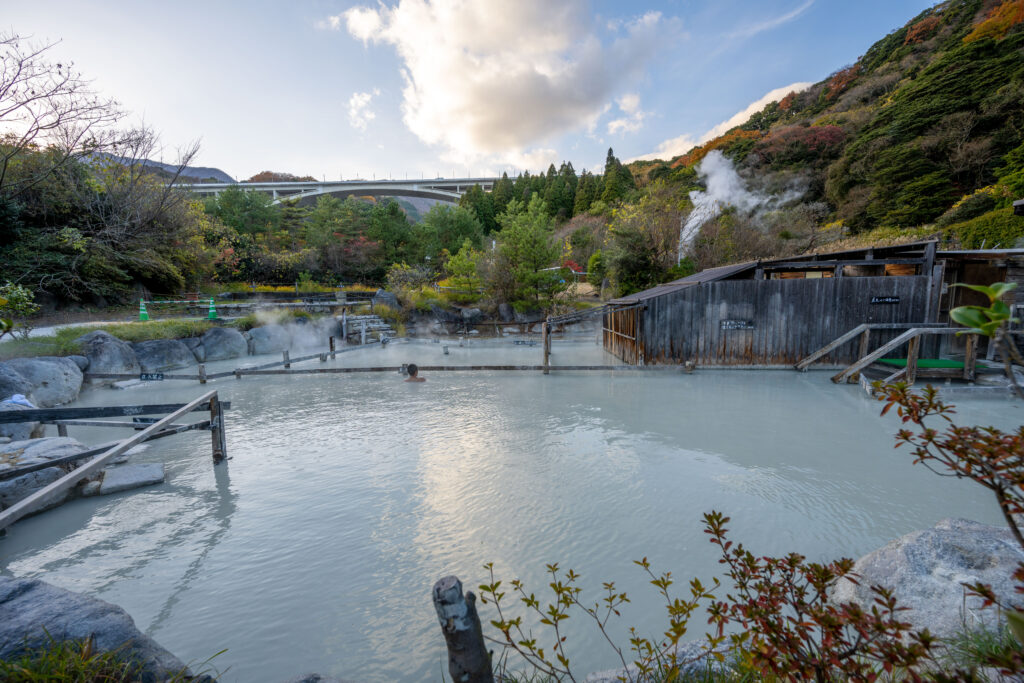
Furthermore, it wasn’t until the Meiji era (1868-1912) that the hot springs saw a significant expansion, thanks to developments like the Beppu Bay Port, Nippo Main Line, Beppu-Dai Railway, and drilling technology innovations to help reach deeper springs. The Taisho and Showa eras witnessed further growth in the hot spring area, accompanied by the gradual expansion of the urban area, cementing the station as the hub of Beppu’s eight hot springs.
Kannawa Onsen 鉄輪温泉
Kannawa is a district located to the north-west of Beppu city, best accessed by bus or car at 20 minutes drive from the Beppu station area. It is one of the prominent areas within Beppu known for its unique and picturesque hot spring landscape. Kannawa is famous for its “jigoku” 地獄 (hell) hot springs, which are too hot for bathing in but are fascinating to observe due to their vibrant colours and intense heat. Kannawa Onsen stands out as the most akin to a hot spring resort among the eight springs, enveloped in a vast veil of steam, serving as an atmospheric representation of Beppu. At the heart of Kannawa area, you will encounter Mushiyu (roughly equivalent to an Onsen sauna).
Established by Ippen Shonin (the Buddhist itinerant preacher who founded the Ji-shū (時宗, “Time sect”) branch of Pure Land Buddhism), and featuring a multitude of communal bathhouses, lodges, and shops lining the quaint, traditionally narrow streets, Kannawa’s unique bathhouse spaces continue to thrive, cementing its status as a quintessential hot spring destination in Beppu that attracts visitors from far and wide, all eager to enjoy its rejuvenating baths.
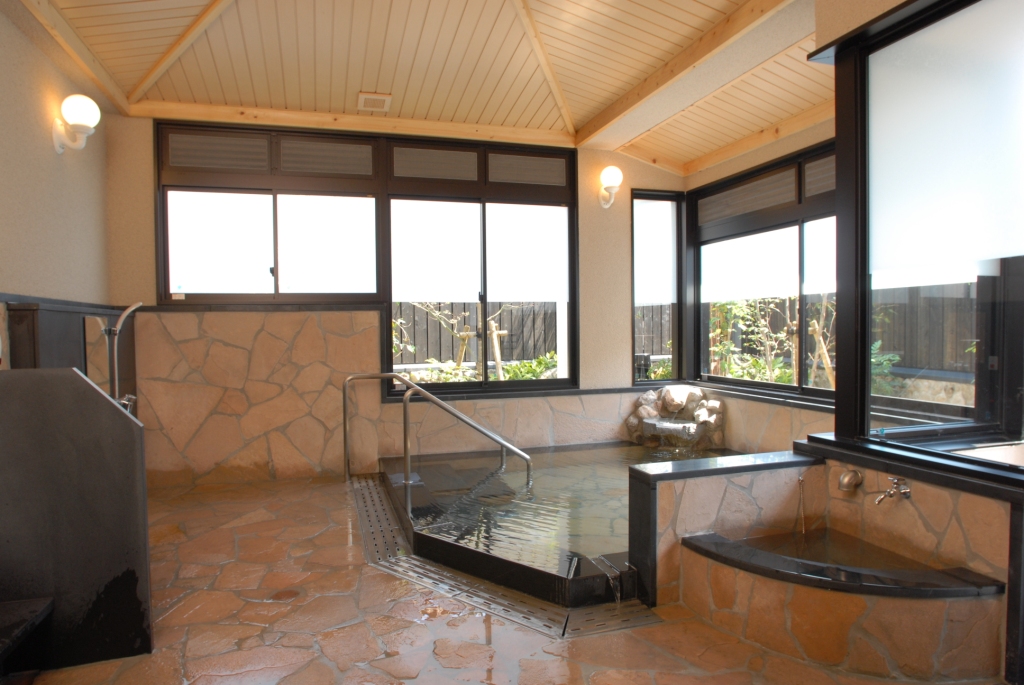
Kankaiji Onsen 観海寺温泉
Kankaiji is a district located in the south of Beppu, just west of the station area, 14 minutes by bus or car. It is known for being a tranquil and scenic area with a focus on traditional Japanese culture and natural beauty. Like much of Beppu, Kankaiji is particularly famous for its hot spring baths and the beautiful Rakutenchi Garden and amusement park.
The hot spring was first discovered during the Kamakura era (1185-1333). Later, during the Edo period (1603-1867), Bungo Kokushi (a historical figure from Bungo Province, Japan) noted, “Accessing Kankaiji is quite challenging, but the scenery is breathtaking, attracting distant visitors seeking a soak.”
Following a significant fire in 1931, it was reconstructed and swiftly transformed into a bustling sightseeing spot. Presently, Beppu boasts an array of expansive resort hotels that are emblematic of the area, serving as a hub for relaxation. Some of these hotels even harness geothermal energy for lighting, heating, and other purposes.
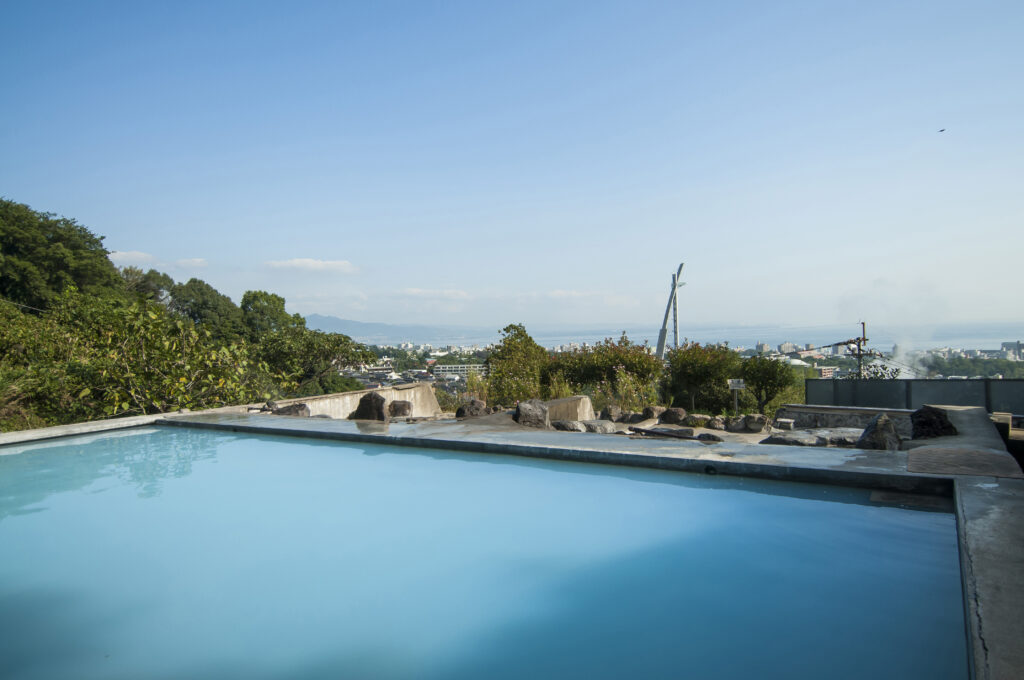
Myoban Onsen 明礬温泉
Myoban is the north-easternmost of the Beppu Eight onsen, as a small area best accessed by car or bus, at 25 minutes from Beppu station.
Guests are welcomed by the view of ethereal white vapours rising from the straw-covered “yunohana huts.” During the Edo period (1603-1867), this region held the distinction of being the nation’s foremost source of the abundant and high-quality “meiban” mineral. It thrived as a hot spring destination alongside the local extraction industry.
In modern times, it has gained notoriety for its citrusy pomelo baths, along with its signature “yunohana” hot spring flowers. The hot water’s fragrant essence, coupled with its sweet and tangy scent, gently the senses and leaves the skin feeling luxuriously soft and silky.
Kamegawa Onsen 亀川温泉
Following the train line to the north-east, just above the train station area, Kamegawa is one of the larger and more easily accessed onsen areas in Beppu, at 14 minutes from Beppu Station.
During the Edo period (1603-1867), a Bungoku Kiko (a travelogue of the Toyokuni Period) acknowledged, “a delightful hot spring in Satoya, and uniquely, it is a salt spring”; Satoya Village is also known as Kamegawa Village, so we can infer this is the area mentioned. Natural sand baths have been a feature of Kamegawa Onsen from those historic times. Back then, as the northern gateway to Beppu, Kamegawa was also an important transportation hub to Toyomae Kokura, and prospered as a therapeutic hot spring for travelers to recover after the journey to Kyushu.
Shibaseki Onsen 柴石温泉
The smallest hot spring of the Beppu Hatto, Shibaseki is found in the north of the town, nestled in the mountains above Kannawa, between Kamegawa and Myoban onsens, 30 minutes from Beppu Station.
It is believed that Emperor Daigo (born 895) and Emperor Go-Reisen (born 1044) frequented Shibaseki for therapeutic baths to alleviate ailments. During the Edo period (1603-1867), a bush fossil was discovered in this area, leading to its name being changed to “Shibaseki.”
In April 1997, the local Shibaseki Onsen underwent a reopening and was given the new name “Fureai Yasuragi Onsen,” which translates to “Friendship and Relaxation Onsen” in Japanese.
Visitors can experience two distinct hot spring pools with varying temperatures, a family bath, an outdoor bath, and a steam bath. The natural surroundings are encompassed by a nearby forest trail, and this region holds the status of being a national hot spring resort alongside Kannawa and Myoban.
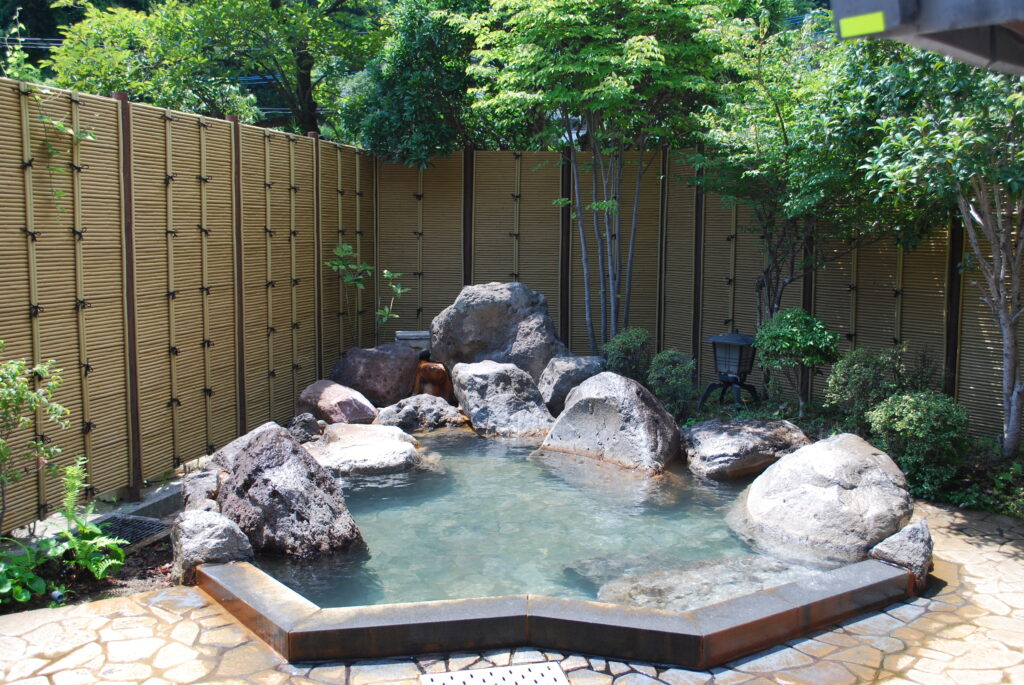
Horita Onsen 堀田温泉
The south-westernmost onsen is hidden away in the Beppu mountains on the way out of the city, but only takes 13 minutes by bus. Opened in the Edo period (1603-1867) as a therapeutic bath, Horita was originally known as Hotta Onsen.
Blessed with a dense abundance of hot springs, Hotta Onsen was a strategic location for transportation to nearby Yufuin, Hita, and Dazaifu, and prospered as a place for travelers to relax after a long journey. Even today, sulfur still gushes out from the rice paddies and valleys, and the abundant hot spring water here is supplied to the city.
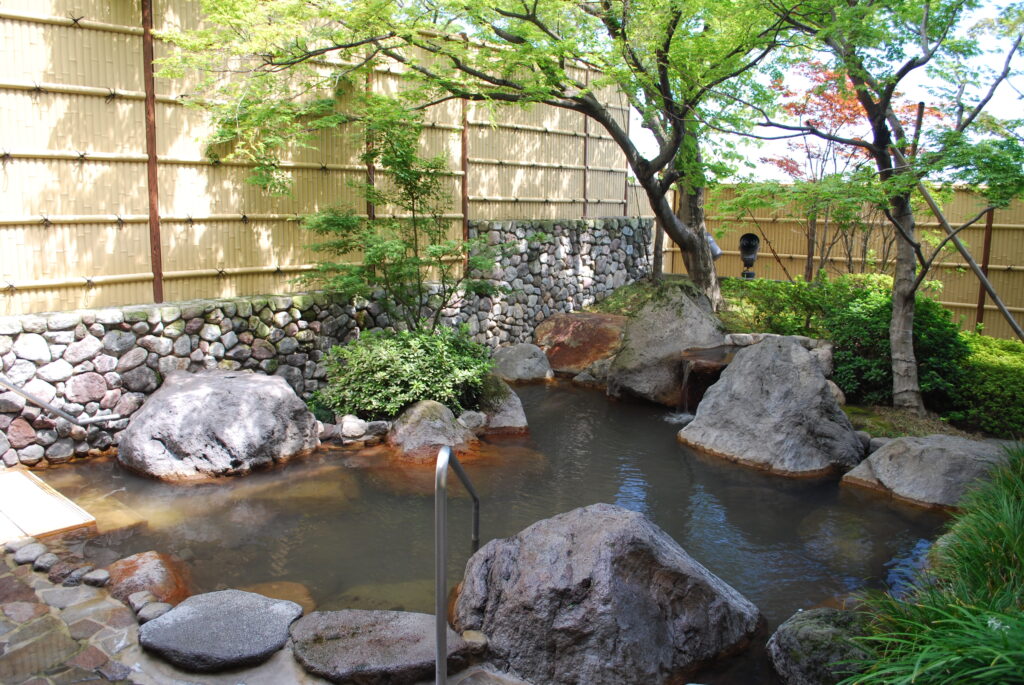
Hamawaki Onsen 浜脇温泉
The southernmost Hamawaki Onsen sits immediately below the Beppu station area, 9 minutes by bus.
The name “Hamawaki” originated from the hot spring that gushed up on the beach at the original birthplace of Beppu Onsen. During the early Kamakura period (1185-1333), Hachiman Asami Shrine was established, and during the Edo period (1603-1867), the region experienced rapid growth as a port town, hot spring resort, and gateway for both land and sea transportation.
To this day, Hamawaki is dotted with traditional inns and still retains remnants of the Meiji and Taisho era entertainment districts. In 1991, as part of a redevelopment initiative, Hamawaki Hot Springs and Yutopia Hamawaki, a multi-purpose hot spring recreation center, were constructed, leading to a transformation of the area into a more contemporary setting.
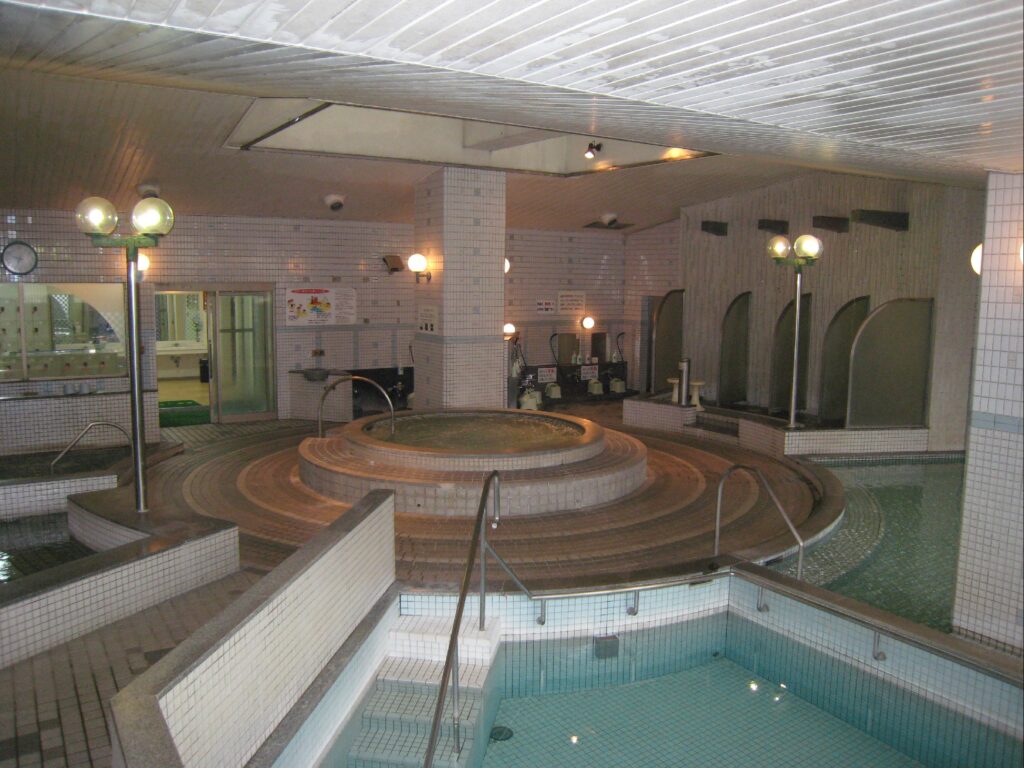
Each of the Beppu Eight has its own unique character for sightseeing and relaxing, and the onsen themselves provide different mineral content for you to enjoy; we suggest trying a few different better and lesser known areas of Beppu when you visit to get the richest and varied experience here.
Please feel free to reach out to us to start planning your trip to Beppu and wider Kyushu.